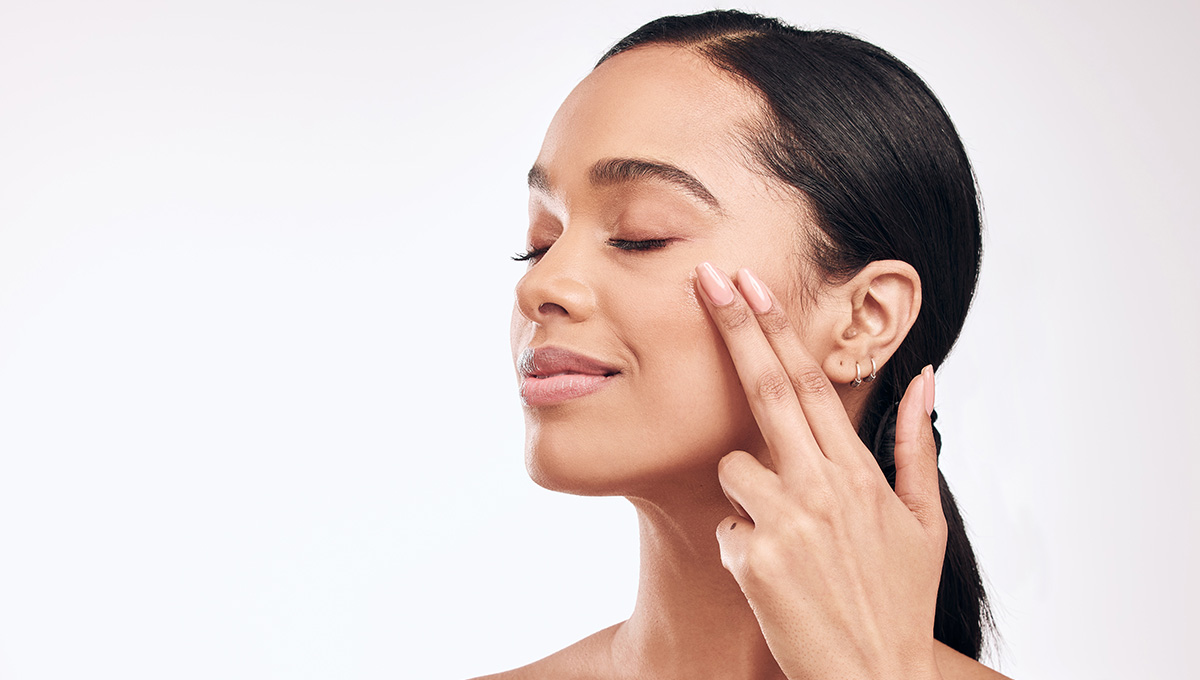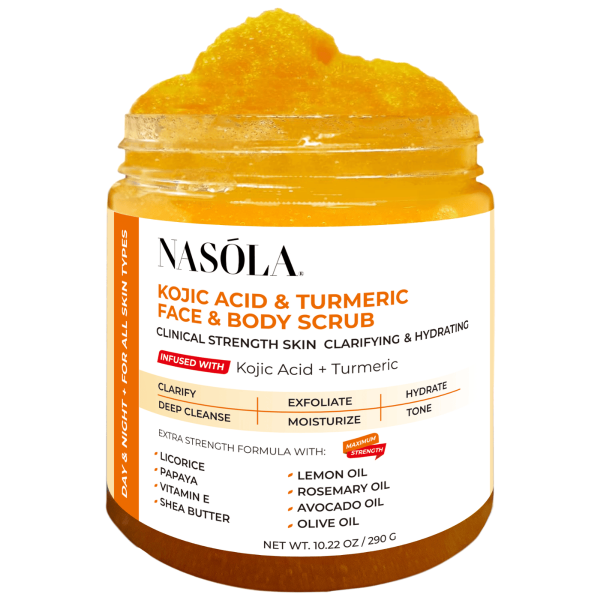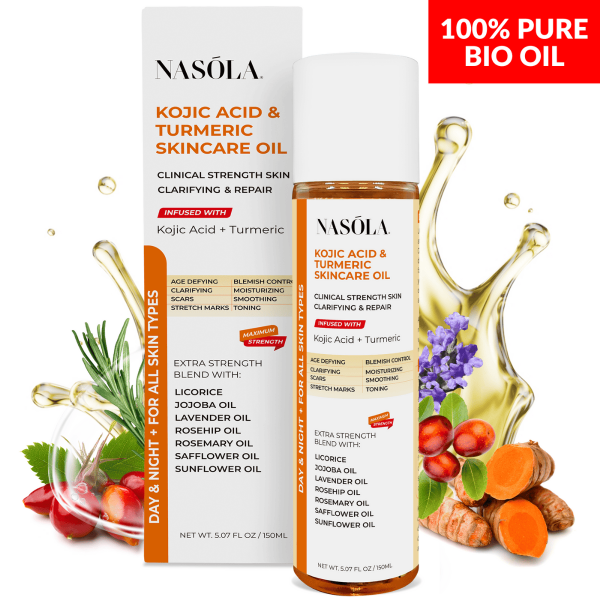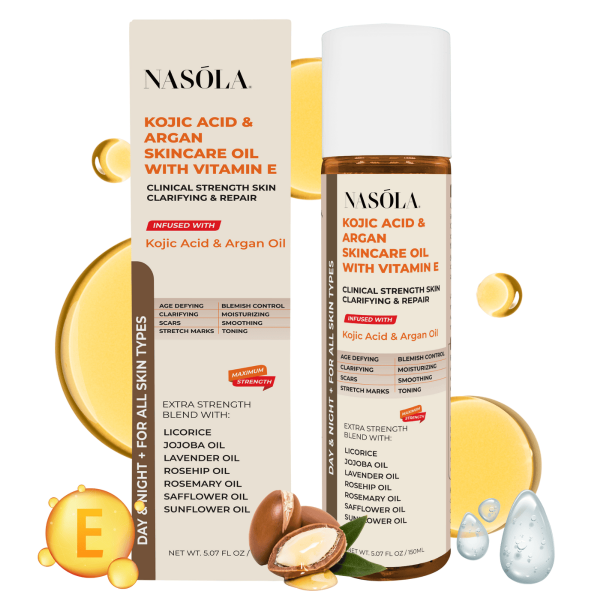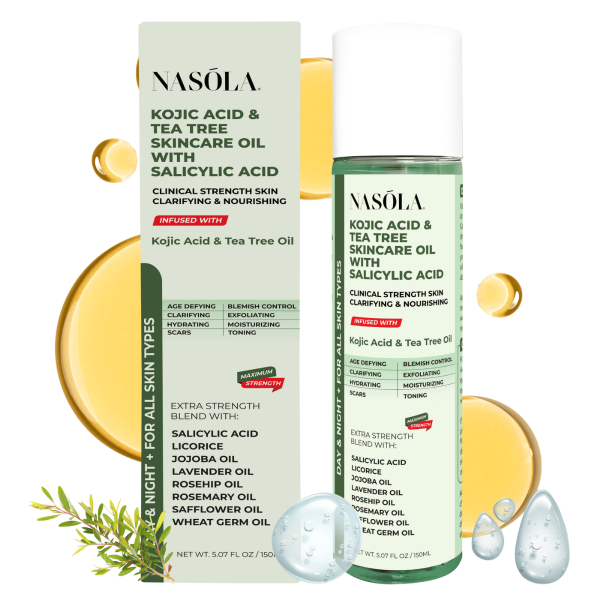I remember the first time I stared at my cheek under bright bathroom lighting and noticed—yep, another spot. A dark patch from a pimple long gone, refusing to fade. Sound familiar?
Whether it’s acne memories, summer sun, or hormonal plot twists, hyperpigmentation always shows up uninvited. But rosehip oil for hyperpigmentation? Now that’s a guest worth keeping.
This natural oil is climbing the skincare charts—and for good reason. Not only does it smooth out uneven skin tone, but it also tackles discoloration from melasma, acne scars, or sun exposure.
With vitamins A and C, plus essential fatty acids, rosehip oil helps create new skin cells while telling excess melanin production to calm down already.
And things only get better when rosehip is combined with other skin-love ingredients like jojoba, safflower, turmeric, and kojic acid.
Products like Nasola’s Takojic Acid Skincare Bio-Oils are bottling this harmony for real, visible results you can feel proud of when you look in the mirror.
Does Rosehip Oil Help with Hyperpigmentation?
So… does rosehip oil help with hyperpigmentation? Yes, and it’s not just anecdotal—it’s backed by science and centuries of glow-ups.
Rosehip oil is rich in Vitamin A, which mimics the gentle magic of retinoids without the irritation. This promotes faster skin cell turnover and helps fade those stubborn dark patches.
Plus, the high Vitamin C content in rosehip targets melanin, the pigment behind hyperpigmentation.
By reducing melanin production, rosehip oil aids in balancing and lightening uneven tones. Toss in antioxidants and essential fatty acids, and you’ve got yourself a skincare MVP.
Its regenerative properties have also made it a go-to for scar healing. Whether you’re combatting old acne regrets or sun-kissed mistakes, using rosehip oil consistently helps repair and renew damaged skin.
Key Benefits of Rosehip Oil for Dark Spots
- Contains Vitamin A to speed up skin renewal and fade discoloration
- High in Vitamin C, an antioxidant that brightens and fights pigmentation
- Rich in fatty acids that moisturize and support barrier repair
- Supports collagen production for skin elasticity and long-term glow
Nasola Kojic Acid Turmeric Skincare Bio-Oil
The Nasola Kojic Acid Turmeric Skincare Bio-Oil takes rosehip oil and turns it into a brilliance-boosting blend. Combined with kojic acid and turmeric, this formula tackles sun spots, acne scars, and persistent pigmentation.
Rosehip calms while turmeric fights inflammation and melanin production. Kojic acid then works behind the scenes to suppress tyrosinase—the enzyme that causes dark spots.
This all-natural oil is gentle yet effective, even on sensitive skin. Plus, safflower, jojoba, lavender, and sunflower oils add that silky-soft finish while helping reduce irritation.
Wanna feel luminous again??? Add this gem to your routine!
Kojic Acid Argan Bio-Oil: A Potent Tool Against Pigmentation

Stubborn pigmentation doesn’t stand a chance when you combine rosehip oil with powerful allies like argan and kojic acid.
This section dives into how this multi-oil approach elevates your skincare game, especially if you’re targeting dryness, aging, or discoloration at the same time.
With its potent Vitamins E and A combo, rosehip nourishes skin cells while promoting turnover. Argan oil enhances hydration and boosts antioxidant defenses, protecting your skin from further sun or environmental damage.
Together with kojic acid, these ingredients offer a dual approach—fading what’s already there and preventing future spots from showing up. Great news for mature or dry skin dealing with age-related pigmentation!
Why Argan and Rosehip Are Better Together
- Repair and protect skin barriers with essential fatty acids
- Boost elasticity and firmness thanks to Vitamin E in argan oil
- Hydrate without greasiness—perfect for dry, sensitive skin
- Reduce and prevent pigmentation with kojic acid and botanical oils
Nasola Kojic Acid Argan Skincare Bio-Oil
Meet your new self-care go-to: the Nasola Kojic Acid Argan Skincare Bio-Oil. This blend infuses rosehip oil with argan, jojoba, safflower, sunflower, lavender, and rosemary oils—making it a deeply nourishing fusion to tackle both dryness and dark spots.
It’s tailor-made for mature skin or anyone with age spots and crepey texture. Applied daily, it won’t just treat pigmentation—it’ll hydrate, revitalize, and deliver the confidence that comes from a naturally radiant complexion.
Why Combine Rosehip Oil with Turmeric and Kojic Acid?
If you’ve tried rosehip oil solo and didn’t get the results you wanted, the missing link might be turmeric and kojic acid. Let’s talk chemistry, minus the boring lecture.
While rosehip promotes regeneration and healing, turmeric targets the source—melanin. Its anti-inflammatory properties calm the skin, reduce swelling, and prevent new dark patches from taking over.
Kojic acid, in turn, inhibits the tyrosinase enzyme from producing excess pigment.
Think of them as a dream team: rosehip heals, turmeric calms, and kojic acid lightens. We’re honestly obsessed with this trio—it delivers.
Science-Backed Reasons to Use This Combo
- Turmeric reduces melanin production and inflammation
- Kojic acid stops excess pigment at the source
- Rosehip promotes healing post-acne or sun exposure
- The combo is plant-based, non-toxic, and gentle on all skin types
Nasola Kojic Acid Turmeric Skincare Bio-Oil
The Nasola Kojic Acid Turmeric Skincare Bio-Oil deserves a second spotlight here. Why? Because it’s precisely the holy trinity of brightening oils all in one bottle.
Rosehip + turmeric + kojic = brighter, clearer skin that doesn’t feel stripped or irritated. It’s ideal if you’re looking for a holistic, botanically backed faithful in your fight against hyperpigmentation.
Nasola Kojic Acid Turmeric Face & Body Scrub
Exfoliation is the missing step too many skip—and it’s crucial! The Nasola Kojic Acid Turmeric Face & Body Scrub helps remove dull, dead skin cells allowing your oils and serums to penetrate better.
Infused with rosehip oil plus turmeric and kojic acid, this is more than just scrub—it’s a skin reset. Start with this before layering your oil and you’ll boost absorption, help fade PIH on your body, and smooth out rough texture.
Use it 2–3x a week for an instant glow-up boost.
Dealing with Oil-Prone Skin? Try Tea Tree and Rosehip Together

Oily or acne-prone skin? Totally get it. You spot the word “oil” and slam the brakes. But not all oils clog your pores. In fact, some oils like tea tree and rosehip work together to regulate sebum, reduce breakouts, and fade those post-acne scars.
Rosehip oil for hyperpigmentation is a silent hero for acne survivors—helping repair, soothe, and renew damaged skin.
Paired with tea tree oil and salicylic acid, it becomes a triple threat: clearing up current acne, preventing breakouts, and helping fade the evidence.
Tea Tree + Rosehip Oil Heroes
- Balances oil production, minimizing excess shine
- Fights acne-causing bacteria naturally
- Fades post-acne pigmentation and blemishes
- Calms the skin and prevents irritation
Nasola Kojic Acid Tea Tree Skincare Bio-Oil with Salicylic Acid
Oily and acne-prone skin rejoice 🙌 This is THE blend you’ve been waiting for. The Nasola Kojic Acid Tea Tree Skincare Bio-Oil with Salicylic Acid combines acne-fighting tea tree and salicylic acid with gentle rosehip and lavender oils.
The formula breaks down pore-clogging debris and helps skin recover quickly from inflammation. Plus? It prevents acne-induced hyperpigmentation, so your skin stays clear, smooth, and scar-free.
Trust me—it’s like skincare plus therapy… for your face!
Ingredient Spotlight: Rosehip Oil
Let’s give the spotlight back to our star—rosehip oil. Derived from the seeds of wild rose bushes, this oil is bursting with skin-loving properties that make it an unsung hero for pigmentation issues.
On a molecular level, rosehip oil contains:
- Vitamin A: Encourages cell turnover, much like retinoids
- Vitamin C: Boosts brightness, fades dark spots, and neutralizes free radicals
- Linoleic Acid: Soothes, hydrates, and strengthens the skin barrier
- Antioxidants: Reduce damage caused by UV rays and environmental stress
It works wonders for all skin types and tones, and it’s particularly effective against acne scars, sun spots, and even melasma with consistent use.
Try blending it into your nightly skincare ritual and pair it with an exfoliant like the Nasola Kojic Acid Turmeric Face & Body Scrub to maximize absorption.
Conclusion
To wrap things up—yes—rosehip oil for hyperpigmentation absolutely works. But it shines even brighter when paired with powerhouse ingredients like kojic acid, turmeric, and salicylic acid.
From brightening old acne scars to smoothing out sun spots, this natural oil has earned its place in your regimen.
Nasola’s line of Kojic Acid Skincare Bio Oils and scrubs makes it incredibly easy to build a routine that targets hyperpigmentation and boosts overall radiance.
Whether your skin is dry, oily, or somewhere in between—we’ve got a solution waiting. Glowing, even-toned skin is closer than you think. All you have to do… is start. ✨
Frequently Asked Questions (FAQs)
Does rosehip oil help with hyperpigmentation?
Yes, rosehip oil contains vitamins A and C which help lighten hyperpigmented areas by promoting skin cell turnover and reducing melanin formation. Its fatty acids also support healing and improvement in skin texture over time.
How long does it take for rosehip oil to fade pigmentation?
Most people start seeing visible improvement in about 4–8 weeks with consistent use. It depends on the severity of the pigmentation and how your skin responds to natural treatments.
Which Nasola product is best for dark spots on oily skin?
The Nasola Kojic Acid Tea Tree Skincare Bio-Oil with Salicylic Acid is excellent for oily and acne-prone skin. It contains tea tree, rosehip oil, and salicylic acid, which help reduce acne and fade scars.
Can I use rosehip oil alongside Vitamin C serum?
Yes! Since rosehip oil naturally contains Vitamin C, it’s safe for layering. Just ensure your skin doesn’t feel too oily by letting it absorb in between layers, or opt for an all-in-one like Nasola’s Turmeric Bio-Oil.
Does rosehip oil lighten melasma?
Rosehip oil can help diminish melasma with regular use. Its vitamin A content encourages cell turnover while vitamin C inhibits excess melanin production, reducing dark patches.
Is it safe to use rosehip oil every day?
Absolutely. Rosehip oil is gentle enough for daily use. Most Nasola Bio-Oils are formulated for everyday application—and enhanced with botanicals to soothe and brighten your skin.
What if I have dry, sensitive skin—will rosehip oil irritate it?
Not likely. In fact, Nasola Kojic Acid Argan Skincare Bio-Oil is great for dry and sensitive skin. It combines rosehip, argan, and several soothing oils to nourish and calm the skin.
Can I use rosehip oil under makeup?
Yes, rosehip oil absorbs quickly and acts as a primer. Just be sure to use a small amount and let it sink in before applying foundation.
Will rosehip oil clog my pores if I have acne?
Nope! Rosehip oil is non-comedogenic. Pair it with salicylic acid like in the Tea Tree Bio-Oil to prevent breakouts while healing acne scars.
How do I get the most out of rosehip oil?
Always exfoliate first. Using a gentle exfoliator like the Nasola Kojic Acid Turmeric Face & Body Scrub 2–3 times a week preps your skin so the rosehip oil can sink in and do its thing.

